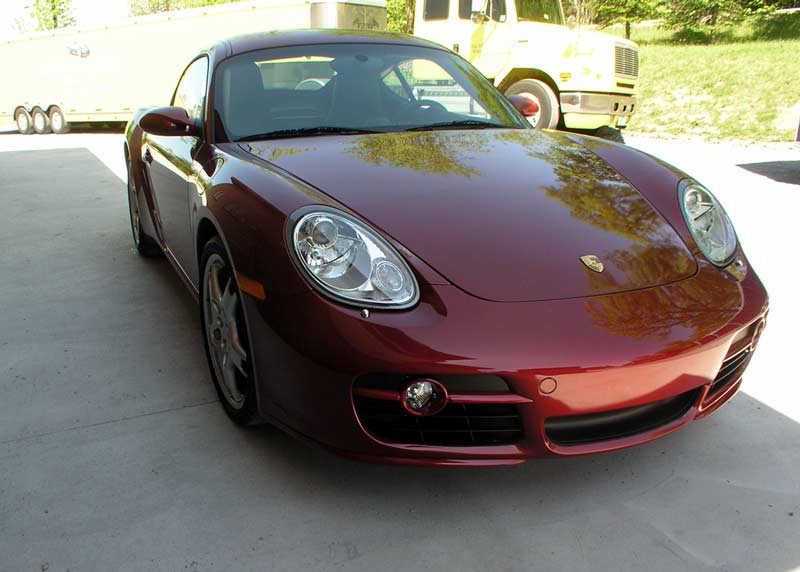
I had not planned, nor has anyone hired me, to write a review of this car. In fact I had no idea I’d be driving it. I was supposed to get a ride from Point A to Point B, but instead I was pressed into service to drive the car from Point A to Point B. It is a tough job, but somebody had to do it.
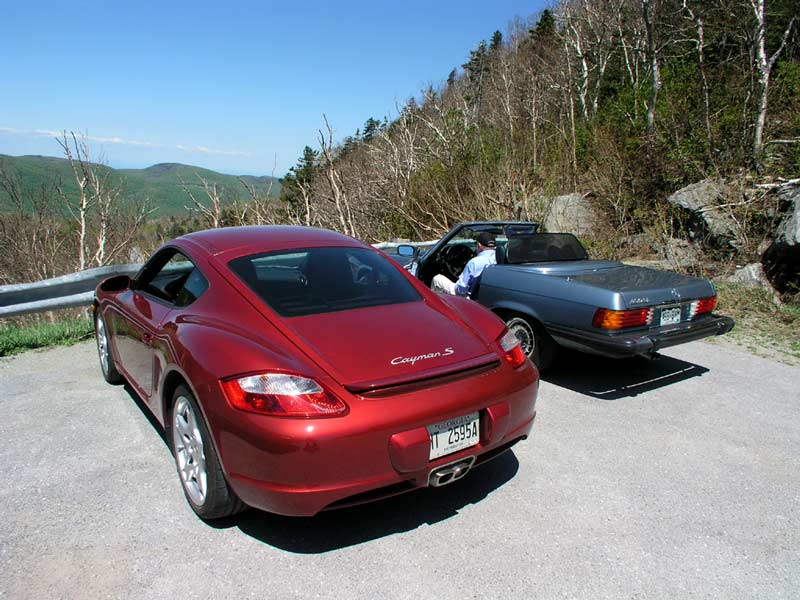
Some full disclosure: I carry several biases about vehicles. I love cars that handle well, but I’m not attracted by raw power. My daily driver is a 90 horsepower turbo-Diesel, and I’m very happy with it. Lots of things that people find attractive, I find repulsive: Size, weight, overly soft ride, too much power and not enough chassis. I spend most of my time driving between 30 and 90 MPH, so how a car behaves at 130 MPH, or even if it can go 130 MPH is irrelevant to me. More important in my estimation are handling, ergonomics, and feedback to the driver… you know … Fahrvergnügen. These are the sort of qualities that you find missing from the typical American barge, be it the Sport Utility Vehicle, or the Muscle Car, or the Rental Fleet Quality Vehicle.
It starts with the steering.
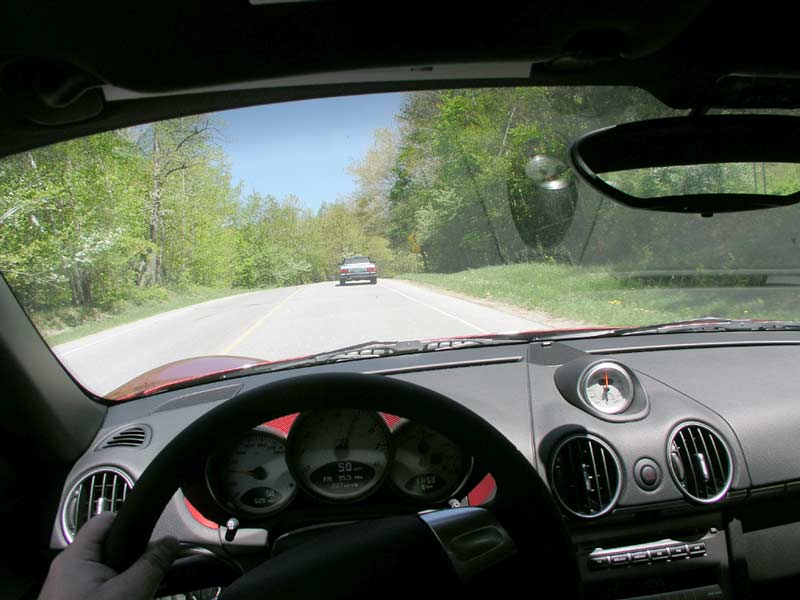
Acceleration and braking are important aspects to a car’s performance, and distilled by the beaten to death horse of the 0-60 time, or the 0-X-0 time. I find both of those metrics completely irrelevant. I don’t participate in drag races, and I drive on roads, which turn left and right. So steering is the core of the driving experience for me. The Cayman’s steering is very taut and precise. If you could arrange the steering response of cars on a continuum, the Cayman might very well anchor the “best” end of the scale. Unlike the average SUV or luxury car where the steering can be as vague and theoretical as piloting an ocean liner, the Porsche steering wheel was like piloting a fighter plane.
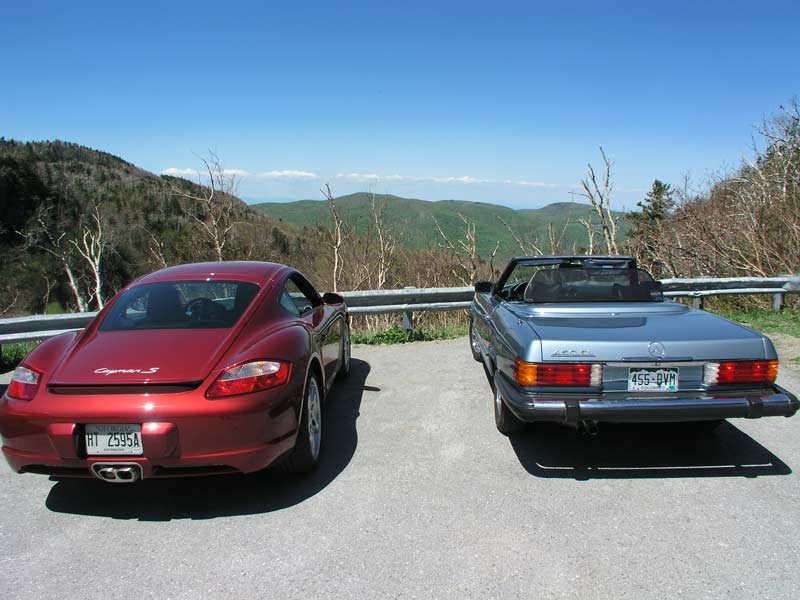
Steering of course produces challenges for an automobile’s chassis and suspension. The interaction between suspension, steering, and chassis is generally called “handling”. To really test the handling of a car it is best to push it beyond the edge of the envelope. Autocross is the perfect test of car handling. Speeds are slow, but steering input is fast, and acceleration and braking are constant. I did not have the opportunity to take the Cayman on an autocross course, but I would love to have the chance. Why? From by couple of hours behind the wheel it was by far, the best handling car I have ever driven. I’ve driven some legendary machines, so this is not a light statement.
The Porsche Cayman is so well-balanced. At no time did I feel like the car was challenged to accomplish any task I asked of it. The roads we travelled were not ideal; frost heaved and poorly surfaced, potholes and cracked asphalt were the rule, not the exception. We chose a route that followed state highways and up and over the ridges they call “mountains” here in Vermont, as well as through rolling farmland. Traffic was light but provided enough cars to give some overtaking tests now and then. My drive was such that I had no idea where I was going. My father was leading the way in the 450sl so all I had to do was follow him. The Cayman can drive circles around the Cruise Missile 450sl, so I found myself lagging back on occasion, just so I could drive faster around a series of corners. On the flat ground I kissed The Ton doing this on occasion, and on the hills I never managed to make the tires squeak. Not exactly hard core hoonage here, but I was enjoying myself well within the edges of the performance envelope. It was the very small course correctness, such as a slight swerve to avoid a pothole, that illustrated how well the Cayman handled. Steering inputs telepathically became swift and sure action. I really like the way this car handles.
So handling is what I like… what don’t I like about this car?
Not much. Honestly my nits to pick about the Cayman are minor in the overall scheme of things. The gearbox is… weird. I love good old-fashioned cog swapping with a man-pedal and stick-shift. This is a manual shift car, in fact six-speed manual… but the gearbox seems… well, odd. The engine has plenty of torque and honestly it feels like 3 speeds will do, but in these days more is better so 6 it must be. At any given speed on these two-lane highways the car was just as happy to be in 3rd, 4th, 5th, or 6th. I really could not tell much difference between them. Additionally the shifter itself had a sort of vague feeling to it; was I in 3rd or 5th? Perhaps the gears become distinctly different at Autobahn speeds, but on rural roads at 45 to 85 MPH (yes… I broke the law, deal with it!) they all seemed the same above second gear. Very Minor Detail: The shift knob itself felt odd in my hand too. Smooth faces where they should have been rough, rough where it should have been smooth. Fingers need something to GRIP, not slide on.
Other ergonomic notes: The whole interior, while well constructed, of nice materials, seemed something of an afterthought. The rearview mirror has an odd shape. The gauges seemed to be a tad contrived and busy. Placement of some stuff made no sense. The big old gauge in the middle top of the dash was not immediately obvious as to its purpose; A barometer? A rally clock? WTF? They obviously need to put as much thought into the interior as they have the handling. Not quite there yet.
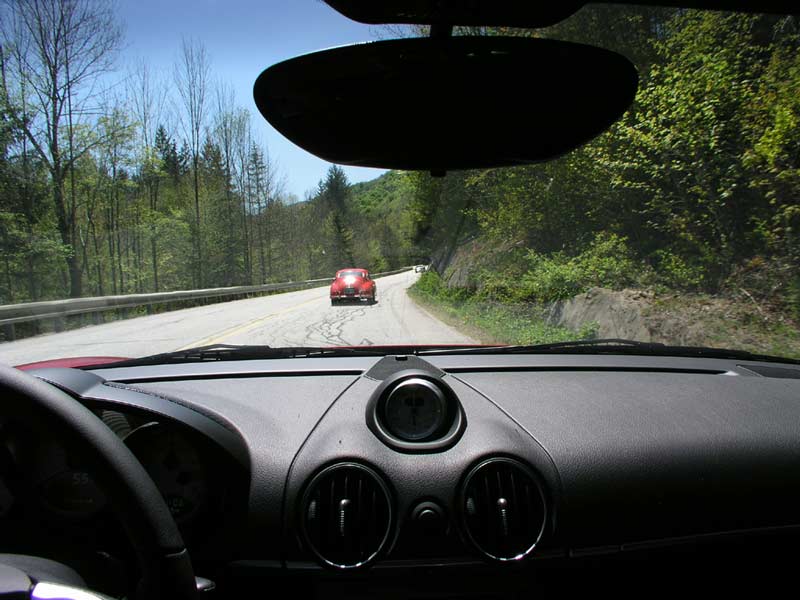
While underway I came upon a 1956 Porsche 356, and followed it for a while. It was a wonderful moment, as the Cayman is in many ways the 356 of now. Porsches Sacred Cow, the 911 is (in my opinion) artificially propped at the top of the performance heap. If they put as much effort into this chassis as they did the 911, they’d have, seriously, the world’s best car. However if they did, their core audience, the Porschephile loyal customers, would collectively revolt. No Porsche can be better than a 911 in their minds. That is sad in some ways as the Boxter/Cayman mid-engined design is truly a world beater. In other ways it is good because for Porsche it is their “low end” car, meaning it is relatively affordable next to the 911.
All the time I drove it I was mentally comparing it to my 43 year old E-type Jaguar. When the E-type arrived on the scene in 1961 it was truly a world beater. Supercar performance at a very reasonable price. In fact it BEAT the supercars of the day, namely the 300sl and the Ferrari 250. It beat them soundly, in all measures of performance, speed, braking, and handling. It did more with less, and more FOR less. This car is very much in that same mold. Like I said, and I’m happy to repeat, this is the best handling car I’ve ever driven, period. If they let it off the leash it could very well be the best car on the planet, bar none. As it is though, it remains relatively affordable, and truly amazing to drive.
Update & Addendum: Several days after I drove and wrote the above, I had another chance to drive the very same car. Again I was asked to help shuttle a car back to Burlington, so I had another chance to have a second look, and make a few more observations. This time we drove one state highway, and a US Highway in moderate traffic. Unlike the previous drive on winding back roads with little to impede progress other than the 450sl I was following, this drive was more indicative of the day-to-day reality of driving in the real world. It was a lot less fun. I never was granted that true bliss of feeling this car handle. A Cayman without some curves to drive it on is like carrying a fishing pole through the Sahara. Sure there were a few long sweepers now and then, and I swerved to avoid a pothole or two… and yes, the car felt great while doing it, but my second drive was pretty mundane and uninvolved. As such I pondered several things about the car that bothered me. The big center mounted gauge is actually a rally clock, but I was never able to figure out how to work it. The manual was still shrink-wrapped and I didn’t want to break the seal. It had no buttons or obvious controls on itself, so I figured it was menu driven somewhere else on the dash. The radio seemed to have a few odd buttons but pushing them did nothing (even the one labeled “Menue”?) There is a stalk at about 7 o’clock that seems to drive a tachometer based display, but “scrolling” through that UI did not produce anything usable… besides a rally clock should be usable from the Navigator’s seat. I gave up on it. In fact I suspect that a fair number of the controls require some serious study in the owner’s manual. Of course, I spend several nights studying one whenever I buy a new car… something I could not do with this car so perhaps I’m shortchanging the Cayman here.
From the driver’s seat the exhaust note is far away, but not as “bass” as I would expect… more of a mid-range noise. There is however a persistent treble note whine from the engine compartment just off your right shoulder that is uniquely Porsche in its nature. A timing chain perhaps? Every Porsche I have ever ridden in has this note to its range and it is always the most dominant noise heard. It can be spine tingling when really pushing the engine, but when just tootling along at 35-50 MPH it is actually annoying as hell. It takes on the nature of similar annoying and persistent noises: a neighbors howling dog all night, a crying baby on an airplane, or a test of the Emergency Broadcast System. A engine screaming when you press the loud pedal is one thing, but screaming all the time is just too much.
Speaking of spine-tingling, I had the opportunity to do some overtaking and was blown away with how breathtakingly awesome this car is when unleashed! To me 0-60 times are a useless metric, but 50-90 times are truly useful… that is passing performance. When you make the demand of a car to go from rolling at some moderate speed to GO FAST NOW. The Cayman? WOW. Passing in this car makes nicotine and heroin look like mere gateway drugs. I was looking forward to slow traffic JUST so I could pass them. Bwahahhaahhhahhhaaaa! Drop the gearshift down to third and press the right foot and pow! You’re dropping The Ton as fast as you can say “woah” and having that banshee over you shoulder scream some Wagnerian epic – condensed into a few seconds. It is more intoxicating than Everclear.
I could get used to this.
Final Thought: I would LOVE to see a lightweight version of this car, ala a Lotus Elise. Strip out all the superfluous stuff… power this & that, heated seats, A/C, cruise, cupholders, etc. Just basic seats, minimal plastics and carpet on the interior. Strip it down and make it fly. Just add lightness. That would be brilliant.
Thanks for the review. As I doubt I will ever be able to drive one (much less own one) this will have to be my vicarious test drive of my current All Time Favorite Porsche.
Chuck:
Way back in 2003 (wow…tis been 5 years we know one another!!) or so, when I first began interacting with you on Jag-lovers, then when we met, and over the span of time we talked, one or the other following things has occurred:
1) You were *completely* shitting me as to your automotive knowledge and background, and you’ve been ‘sand-bagging,’ waiting for The Perfect Moment to divulge/pursue your nascent automotive writing/photo’ing career, or:
2)You have simply learned how to write, and accompany with THE PERFECT foto for the article/musing/writing, some of the *best* damned articles about cars I’ve ever read. And you do *far* more than make ‘musical sounds as {you} drop wrenches on the concrete.” I mean, lookat yer exhaust tips…:)
Like you, I don’t say this lightly; like you, I’ve drive *much* more than my share of exotic and expen$ive automotive stuff, and have been reading *every* major, well-recognized automotive writer of the latter half of the 20th century.
If you don’t pursue this endeavour, both of your *stunning* photography AND your really, REALLY great automotive writing, I will *personally* come to Washington State, sit my 299-pound bulk upon your chest, and *thrash* you about the head and shoulders with used oil-soaked rags until you do.
😉
(BTW: your description of the Cayman is, with NO word of a lie, THE best ‘everyman’s’ description I have read about the car. NO shit.)